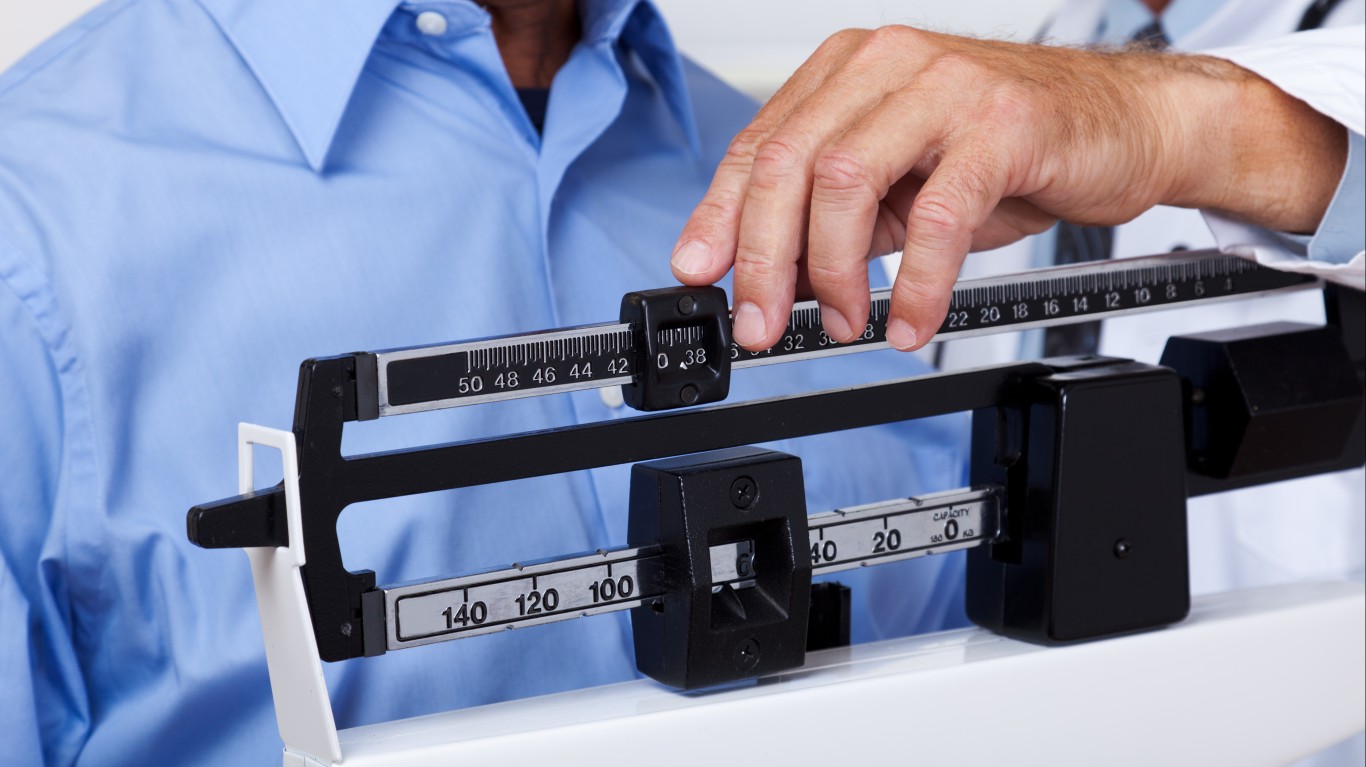
Some of the best opportunities can still be found in obesity treatment stocks.
Look at Viking Therapeutics (NASDAQ:VKTX), for example.
Now trading at $57.80, we strongly believe it could easily rally back to $70, near-term. All as it nears Phase 3 trials for its obesity treatment, VK2735. In fact, as noted by the company, “We are advancing this compound into Phase 3 development,” CEO Brian Lian said, as noted in a company press release, adding that “we are currently preparing for an end-of-phase 2 meeting with the agency, which we expect to occur later this year.”
Even better, Phase 1 trials of the oral form of the treatment are showing substantial safety and tolerability, with positive signs of clinical activity, as also noted in a press release. So far, patients reported a mean weight loss of up to 5.3% from baseline after 28 days. Plus, analysts over at JP Morgan just initiated an overweight rating on the VKTX stock ahead of the company’s presentation at Obesity Week in early November.
Analysts at Truist also say the pullback in VKTX is a buying opportunity.
Reiterating a buy rating on the VKTX stock with a $105 price target, the firm argued that demand for obesity treatments is still robust. They also believe Viking could benefit from a similar commercial strategy to that used by Eli Lilly.
However, Viking Therapeutics isn’t the only obesity stock worth watching. Here are four more.
Key Points About This Article:
- There’s still substantial upside ahead for obesity treatment stocks, especially when 40% of the U.S. population is considered obese.
- Many of the top obesity treatment stocks are oversold after recent pullbacks.
- The obesity drug treatment market could be worth $150 billion by 2033, according to analysts at BMO Capital Markets.
Structure Therapeutics

Structure Therapeutics (NASDAQ:GPCR) just announced that its 2b obesity treatment study for GSBR-1290 would start in the fourth quarter of the year. In a prior study, GSBR-1290 “demonstrated a clinically meaningful and statistically significant placebo-adjusted mean weight loss of 6.2% at 12 weeks,” according to a company press release.
In addition, according to JPMorgan, “We think the opportunity for oral GLP-1s is underappreciated and think this market could generate $30bn in sales by 2035. GPCRs lead asset, 1290, is a pure-play option for this opportunity, and even a small share would support substantial upside to the stock.”
Altimmune

There’s also Altimmune (NASDAQ:ALT), whose pemvidutide treatment led to weight loss while preserving lean mass. That alone set it apart from the competition, with reports that Wegovy and Zepbound can lead to significant loss of muscle mass.
As noted by Seeking Alpha, “Citing data from its Phase 2 MRI-based body composition sub-study, MOMENTUM, the Gaithersburg, Maryland-based biotech said that pemvidutide, a dual GLP-1/glucagon dual receptor agonist, preserved lean mass in overweight and obese patients.”
In addition, as noted in a company press release, “Preservation of lean mass may reduce risk of falls and fractures, development of co-morbidities, and rates of all-cause mortality, particularly in individuals over the age of 60,” said Scott Harris, M.D., Chief Medical Officer. “Our data demonstrates pemvidutide’s class-leading lean mass preservation, superior to that reported historically with diet and exercise.”
Eli Lilly

Investors may also want to take advantage of the pullback in Eli Lilly (NYSE:LLY), too.
After dropping from about $960 to $905.54, LLY appears to have caught strong support and is just starting to pivot higher. Helping, sales of its diabetes and obesity medications, Mounjaro and Zepbound are still strong. Two, LLY yields 0.57% at the moment. While it’s not a substantial dividend, it’s still an added bonus for a stock set to explode even higher.
In its most recent earnings report, company revenue jumped 36% thanks to those two obesity treatment stocks. Second quarter EPS of $3.28 was up 68% year over year. Plus, the company even raised its full-year guidance by $3 billion. It also raised its EPS guidance to a new range of $15.10 to $15.60 and non-GAAP EPS to a new range of $16.10 to $16.60.
Novo Nordisk

Investors may also want to consider buying the pullback in Novo Nordisk (NYSE:NVO).
After topping out at around $139.74, the stock pulled back to about $128, where it found strong support. Now back up to $131.77, we’d like to see it initially retest its prior high.
Fueling upside, the company just released its results from an early-stage trial for its experimental weight loss pill, amycretin. So far, according to the company, its potential is comparable to its other obesity products, such as Wegovy and Ozempic.
While recent earnings weren’t so hot for the company, especially with a pullback in sales of both obesity treatments, NVO is still a long-term buy and hold. After all, overall demand for obesity treatment is only expected to grow once you consider that more than 40% of U.S. adults are now considered obese.
It’s Your Money, Your Future—Own It (sponsor)
Retirement can be daunting, but it doesn’t need to be.
Imagine having an expert in your corner to help you with your financial goals. Someone to help you determine if you’re ahead, behind, or right on track. With SmartAsset, that’s not just a dream—it’s reality. This free tool connects you with pre-screened financial advisors who work in your best interests. It’s quick, it’s easy, so take the leap today and start planning smarter!
Don’t waste another minute; get started right here and help your retirement dreams become a retirement reality.
Thank you for reading! Have some feedback for us?
Contact the 24/7 Wall St. editorial team.





